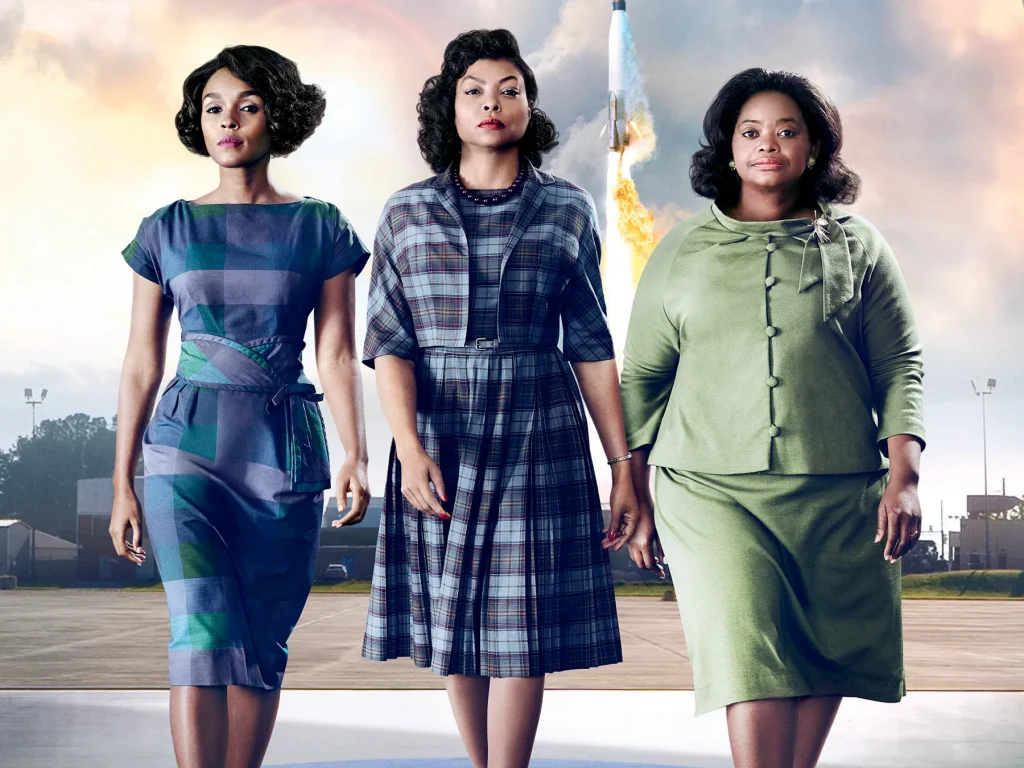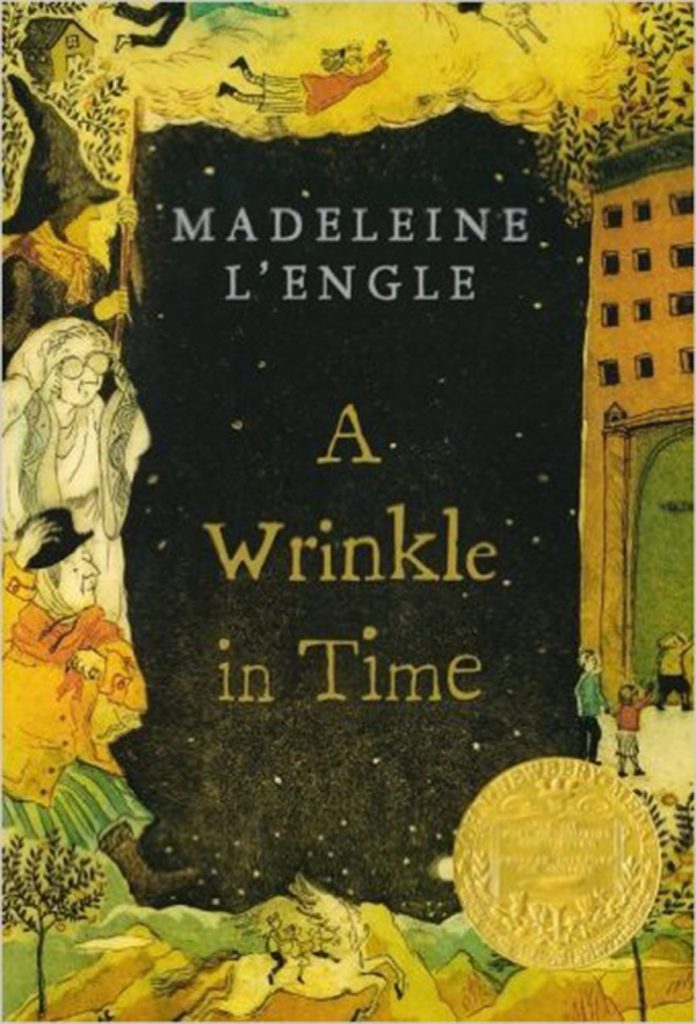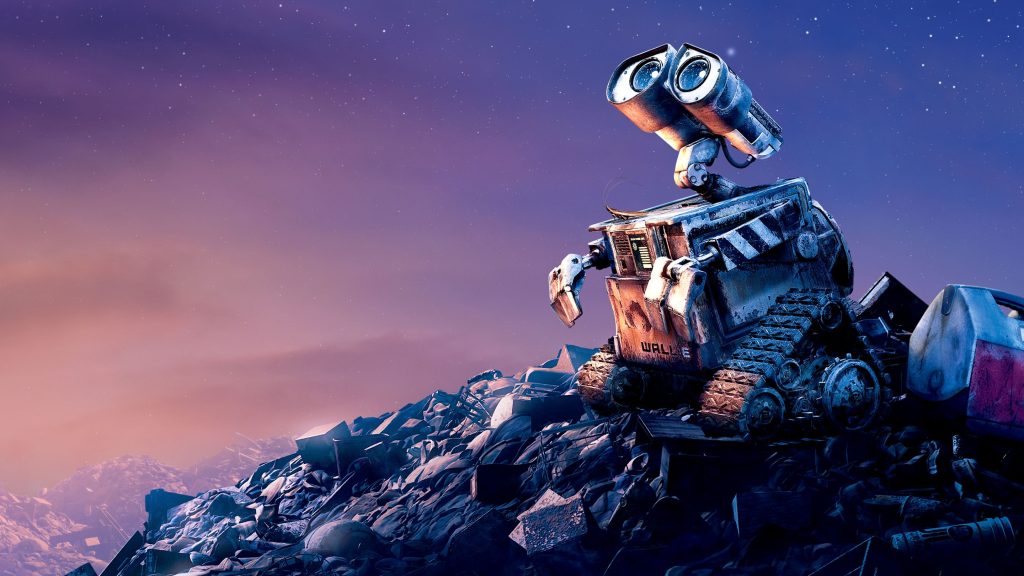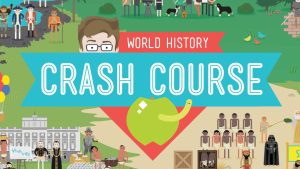Are you seeking engaging ways to bring science to life in your middle school classroom? I’ll share my top picks for science movies that work brilliantly for middle school students in this guide. These films entertain and reinforce scientific principles, inspire critical thinking, and show science in action across various fields. Whether you’re a teacher looking to supplement your curriculum or a parent wanting to nurture your child’s scientific curiosity, these recommendations will help you select age-appropriate, engaging films that make learning science an adventure.
Hidden Figures

“Hidden Figures” tells the true story of three African American women mathematicians—Katherine Johnson, Dorothy Vaughan, and Mary Jackson—who played crucial roles at NASA during the Space Race in the 1960s.
What makes this movie exceptional for middle school students is its perfect blend of history, mathematics, engineering, and social issues. Students witnessed how these brilliant women overcame both racial and gender barriers while applying complex mathematical calculations that were essential for successful space missions.
The film showcases how mathematics connects to real-world applications in a way textbooks often struggle to convey.
The Lorax
“The Lorax may appear a simple animated film, but it’s one of the most effective tools for teaching environmental science to middle schoolers. Based on Dr. Seuss’s classic book, this movie addresses serious ecological issues like deforestation, pollution, and sustainability in a way that resonates with young audiences.
The film follows the story of a young boy who discovers what happened to the Truffula trees and the ecosystem they support. Through vibrant animation and memorable characters, students witness the consequences of prioritizing short-term profits over long-term environmental health.
What makes The Lorax” particularly valuable for middle school science education is how clearly it illustrates cause-and-effect relationships in ecosystems. Students can easily trace how removing one species (the Truffula trees) triggers a cascade of environmental consequences—from air pollution to water contamination to the displacement of animal species.
The Martian
“The Martian offers middle school students a thrilling introduction to applied science and problem-solving. Based on Andy Weir’s novel, this film follows astronaut Mark Watney’s struggle to survive on Mars after being accidentally left behind by his crew.
This movie is exceptional for science education because it showcases practical applications of biology, chemistry, physics, and engineering. Watney’s efforts to grow food, create water, establish communication, and modify equipment demonstrate the scientific method. He faces challenges, formulates hypotheses, conducts experiments, analyzes results, and refines his approach—precisely the process we want students to understand.
The film’s emphasis on “sciencing the heck out of” problems resonates with middle schoolers. It presents science not as a collection of facts to memorize but as a powerful toolkit for solving real-world problems.
Big Hero 6
“Big Hero 6 is a perfect entry point for middle schoolers interested in robotics, engineering, and healthcare technology. This animated film follows teenage prodigy Hiro Hamada and his healthcare companion robot Baymax as they form a superhero team to combat a mysterious threat.
This movie’s enthusiastic celebration of innovation and STEM fields makes it particularly valuable for science education. The film portrays scientists and engineers not as stereotypical nerds but as creative, diverse, and exciting characters who use their technical knowledge to solve problems and help others. The technology depicted in “Big Hero 6” provides excellent teaching opportunities:
- Baymax demonstrates principles of robotics, artificial intelligence, and medical technology
- The microbots showcase concepts of nanotechnology and swarm intelligence
- Various gadgets illustrate principles of physics, chemistry, and engineering
The film’s message that intelligence and technical skills can be forces for good resonates with middle schoolers who are beginning to consider their potential career paths and how they might contribute to society.
A Wrinkle in Time

“A Wrinkle in Time,” based on Madeleine L’Engle’s classic novel, offers middle school students a unique blend of science fiction, physics concepts, and philosophical questions. The story follows Meg Murry, her brother Charles Wallace, and her friend Calvin as they travel across dimensions to rescue Meg’s father, a scientist who disappeared while researching the tesseract—a wrinkle in space-time.
This film introduces students to fundamental physics concepts in an imaginative context:
- The tesseract illustrates the idea of higher dimensions and space-time
- The story touches on quantum physics and theoretical concepts like wormholes
- The film visualizes abstract mathematical concepts in accessible ways
What makes “A Wrinkle in Time” particularly valuable for middle school science education is how it connects scientific concepts to broader themes of courage, individuality, and the search for knowledge.
After watching the film, students might create models of tesseracts or other higher-dimensional objects, research the real science behind the dimensional theory, or write creative pieces exploring what traveling through a wrinkle in time might entail.
Spare Parts
“Spare Parts” tells the inspiring true story of four undocumented Mexican-American high school students who form a robotics team and compete against MIT and other elite universities in an underwater robotics competition—with a robot built from affordable, repurposed parts.
This film is particularly valuable for middle school science education because it demonstrates how creativity, determination, and teamwork can overcome limited resources. The students in the movie don’t have access to expensive equipment or formal engineering training, yet they apply fundamental scientific principles to build a functional underwater robot.
What makes “Spare Parts” compelling is how it connects science education to real-world opportunities and challenges. The students in the film aren’t just learning scientific concepts—they’re discovering how these concepts can open doors to new possibilities in their lives.
This movie effectively engages students who might not see themselves as “science people.” After watching “Spare Parts,” students often recognize that science isn’t just for privileged geniuses in high-tech labs but is accessible to anyone with curiosity and persistence.
The film can spark meaningful discussions about:
- The importance of diversity in STEM fields
- How scientific knowledge can empower communities
- The value of hands-on, project-based learning
- The role of mentorship in scientific development
“Spare Parts” reminds us that some of the most valuable scientific learning happens outside textbooks when students tackle real problems with limited resources and unlimited determination.
Young Einstein
“Young Einstein” is an unconventional choice that offers a humorous and fictional take on Albert Einstein’s life. While historically inaccurate (depicting Einstein as an Australian apple farmer who discovers relativity while trying to add bubbles to beer), this quirky film is a valuable teaching tool when used appropriately.
The movie’s scientific content is deliberately absurd, which creates a perfect opportunity for middle school students to practice critical thinking and fact-checking. Teachers can use the film’s creative liberties to challenge students to:
- Identify scientific inaccuracies in the movie
- Research the actual history of Einstein’s discoveries
- Explore the real science behind concepts like relativity, energy, and sound waves
Wall-E

“Wall-E offers middle school students a thought-provoking exploration of environmental science, technology ethics, and sustainability. Set in a future where Earth has been abandoned due to catastrophic pollution, the film follows a waste-collecting robot who inadvertently embarks on a space journey that might determine humanity’s fate.
This animated film is particularly valuable for science education because it visualizes the potential long-term consequences of current environmental challenges. Students can observe a scientifically plausible (if exaggerated) outcome of unchecked consumption and pollution—making abstract environmental concerns concrete and personal.
The movie provides excellent teaching opportunities around:
- Waste management and recycling
- Environmental carrying capacity
- Space technology and robotics
- Human dependence on technology
- Ecosystem rehabilitation
What makes “Wall-E” especially effective is its minimal dialogue, which allows the environmental storytelling to take center stage. The contrast between the trash-covered Earth and the sterile, technology-dependent human ship creates a powerful visual lesson about environmental stewardship.
“Wall-E helps students understand that environmental science isn’t just about studying problems—it’s about developing solutions that balance human needs with ecological sustainability. The film’s ultimately hopeful message—that it’s not too late to change course—empowers students to see themselves as potential agents of positive environmental change.
Conclusion
The appropriate science movie can make a middle school classroom come alive, translating amorphous concepts into concrete experiences that promote questioning and deepen understanding. Each film on this list offers new methods of connecting scientific principles to interesting narratives, everyday applications, and broader social issues.
Remember that the biggest educational payoff of these films is not watching them but in the activities, discussions, and explorations they generate. Use these films as preludes to hands-on activities, research projects, or design challenges that allow students to apply their observed scientific principles.
ALSO READ: 6 Best Mid-Atlantic Colleges
FAQs
These movies generally suit middle school students (ages 11-14), though some contain mild language or intense scenes. “The Martian” and “Hidden Figures” have PG-13 ratings, so you might want to preview them or use selected clips.
Consider showing these films as unit introductions, reward activities, or bridges between related topics. Many teachers show 15-20 minute segments spread across several class periods rather than entire films. Always pair the viewing with discussion questions, hands-on activities, or writing prompts.
Absolutely! The March of the Penguins, Planet Earth, and National Geographic documentaries work well for middle schoolers. The BBC’s “The Blue Planet” series is excellent for marine biology units.
Use inaccuracies as teaching opportunities! Have students research the actual science and identify what the movie got right or wrong. This will develop their critical thinking skills and deepen their understanding of scientific concepts.
Yes! Visual learners and students who connect better with storytelling often grasp scientific concepts more readily when presented through film. These movies can provide alternative entry points to complex scientific ideas.




